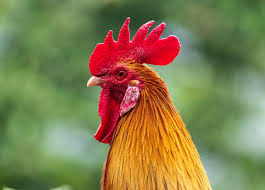Amoxicillin Premix
Name:
Amoxicillin Premix
Common Capacity:
- 100g/bag
- 500g/bag
- 1000g/bag (1kg/bag)
Common Concentration:
- 5%
- 10%
Applicable Animals:
Amoxicillin is a broad-spectrum antibiotic effective against various Gram-positive and some Gram-negative bacteria. It is suitable for treating bacterial infections and promoting growth in various farmed animals.
Applicable Animals in Global Animal Husbandry:
- Poultry (Chickens, Ducks, Turkeys): Respiratory tract infections (e.g., Chronic Respiratory Disease), gastrointestinal infections (e.g., E. coli disease, Salmonellosis), and Staphylococcosis.
- Pigs (Piglets, Growing-Finishing Pigs, Breeding Pigs): Respiratory diseases (e.g., swine pneumonia, pleuropneumonia), gastrointestinal diseases (e.g., yellow and white scour in piglets, E. coli disease), urogenital system infections, skin infections, etc.
- Cattle (Calves, Dairy Cows, Beef Cattle): Respiratory tract infections (e.g., bovine pneumonia), gastrointestinal infections, mastitis, metritis, etc.
- Sheep and Goats (Lambs, Adult Sheep/Goats): Respiratory tract infections, gastrointestinal infections, urogenital system infections, etc.
- Aquatic Animals (Fish): For bacterial diseases in aquatic animals caused by sensitive bacteria.
- Special Farming Animals (e.g., Rabbits, Mink): For bacterial diseases caused by sensitive bacteria.
Usage and Dosage:
Amoxicillin premix is typically administered by mixing with feed. The dosage should be determined based on the active ingredient content, animal species, age, body weight, severity of the condition, and veterinary advice.
General Guidelines (Always follow specific product instructions and veterinary advice):
- Mixed with Feed: Mix the product thoroughly with feed before feeding.
- Poultry:
- Young Poultry/Broilers: For 5% concentration, add 200-400g per 1000kg of feed (i.e., 10-20g Amoxicillin per ton of feed).
- Laying Hens/Breeding Birds: For 5% concentration, add 300-600g per 1000kg of feed (i.e., 15-30g Amoxicillin per ton of feed).
- Pigs:
- Piglets/Nursery Pigs: For 5% concentration, add 300-500g per 1000kg of feed (i.e., 15-25g Amoxicillin per ton of feed).
- Growing-Finishing Pigs: For 5% concentration, add 200-400g per 1000kg of feed (i.e., 10-20g Amoxicillin per ton of feed).
- Breeding Pigs: For 5% concentration, add 300-600g per 1000kg of feed (i.e., 15-30g Amoxicillin per ton of feed).
- Cattle and Sheep (Calves, Lambs, Feeder Cattle/Sheep): For 5% concentration, add 400-800g per 1000kg of feed (i.e., 20-40g Amoxicillin per ton of feed).
- Aquatic Animals: Administer by mixing into feed in appropriate proportions, depending on the specific disease and species.
- Poultry:
- Course of Treatment: Administer for 5-7 consecutive days, or as directed by a veterinarian.
Dosage by Growth Stage:
- Young Animals: Susceptible to bacterial infections, can be used for prophylactic addition to reduce incidence, or for early infection treatment. Doses are typically lower or at the lower end of the recommended range.
- Growing-Finishing Animals: Commonly used as a feed additive for growth promotion and prevention of common bacterial diseases. Specific dosages depend on farming practices and disease prevalence.
- Breeding Animals: Can be used for the prevention and treatment of reproduction-related bacterial infections, such as Mastitis-Metritis-Agalactia (MMA) syndrome in sows.
Applicable Diseases and Symptoms:
Amoxicillin premix is primarily used for the treatment of diseases and symptoms caused by sensitive bacteria, including:
- Respiratory Tract Infections: Such as bacterial pneumonia, bronchitis, infectious rhinitis, chronic respiratory disease, characterized by coughing, wheezing, nasal discharge, dyspnea, depression, and loss of appetite.
- Gastrointestinal Infections: Such as bacterial enteritis, gastroenteritis, yellow and white scour in piglets, Salmonellosis, E. coli disease, characterized by diarrhea, vomiting, loss of appetite, dehydration, and lethargy.
- Urogenital System Infections: Such as cystitis, pyelonephritis, metritis (e.g., MMA syndrome in sows).
- Skin and Soft Tissue Infections: Such as bacterial dermatitis, localized abscesses, wound infections.
- Staphylococcal infections, Streptococcal infections, Pasteurellosis, and other sensitive bacterial infections.
Precautions:
- Allergic Reactions: Some animals may be allergic to penicillin-class drugs, exhibiting symptoms such as rashes, edema, and respiratory distress. Severe cases may lead to anaphylactic shock. If allergic reactions are observed, discontinue use immediately and initiate emergency treatment.
- Bacterial Resistance: Prolonged or improper use may lead to the development of bacterial resistance. Use strictly under veterinary guidance and avoid misuse.
- Withdrawal Period: Strict adherence to the product’s specified withdrawal period is necessary to ensure drug residues in animal products (meat, eggs, milk) comply with food safety standards.
- Homogenous Mixing: The premix must be thoroughly mixed with feed to ensure accurate dosage intake by animals.
- Storage: Store sealed in a cool, dry, well-ventilated place, away from direct sunlight.
- Hepatic and Renal Impairment: Dosage adjustments may be required for animals with hepatic or renal dysfunction.
Contraindications:
- Contraindicated in animals with a known hypersensitivity to penicillin-class drugs.
- Use with caution in herbivorous animals such as rabbits, guinea pigs, hamsters, and gerbils, as it may cause gastrointestinal flora imbalance or even death. (This applies only to high doses or long-term sensitive applications; specific product instructions should be consulted.)
- Use with caution or contraindicate in animals with severe hepatic or renal impairment.
Post-Administration Care:
- Observe Animal Status: Closely monitor the animal’s mental state, feed and water intake, and excretion during and after medication to assess treatment efficacy.
- Supportive Therapy: For severely ill animals, in addition to amoxicillin, symptomatic treatment and supportive care, such as fluid therapy, vitamin supplementation, and antipyretics, should be combined.
- Environmental Improvement: Maintain a clean and hygienic breeding environment with appropriate temperatures to reduce stress and facilitate animal recovery.
- Biosecurity Management: Strengthen biosecurity measures to prevent disease spread.
- Record Keeping: Accurately record medication details, including dosage, duration, batch number, and animal responses, for future reference.
Applicable Animals
Animal species suitable for this veterinary medication




